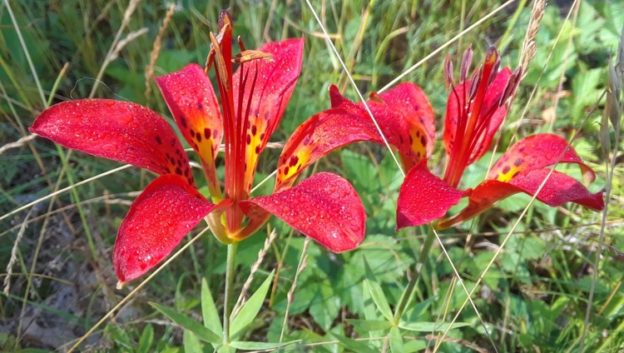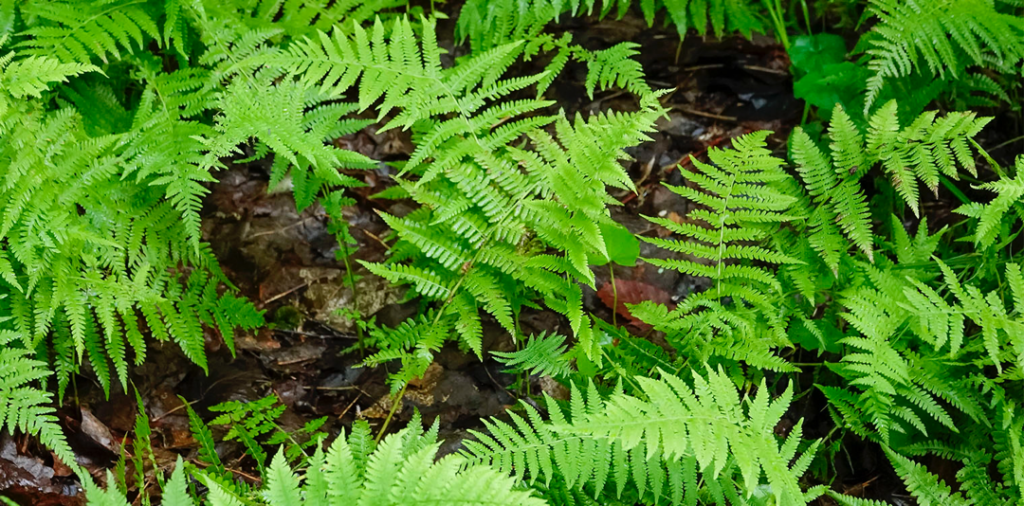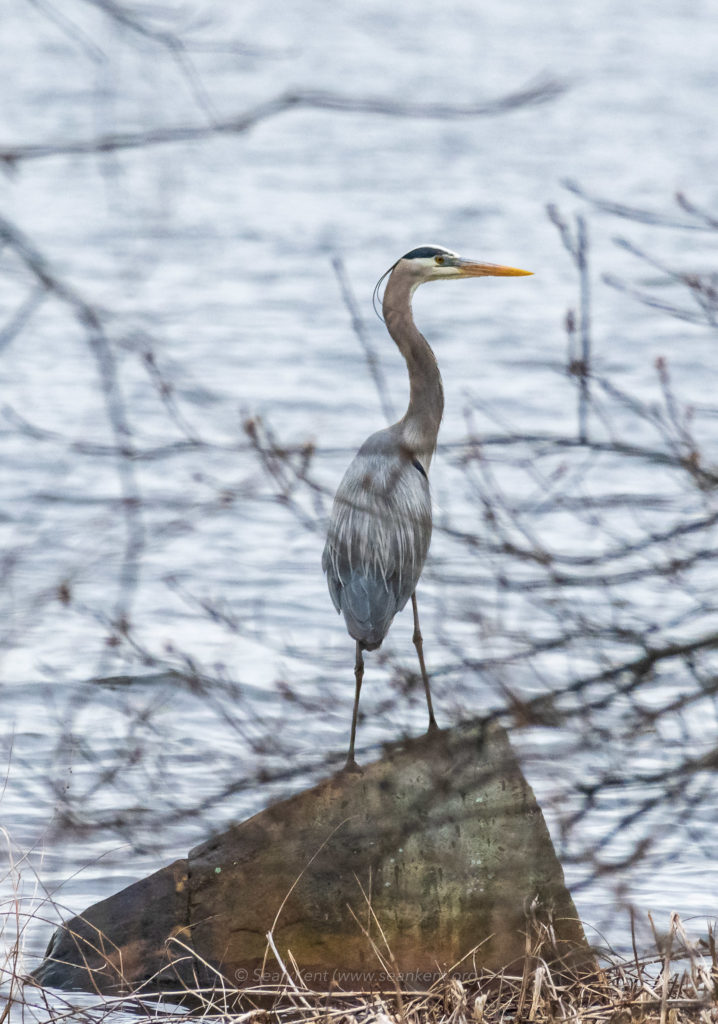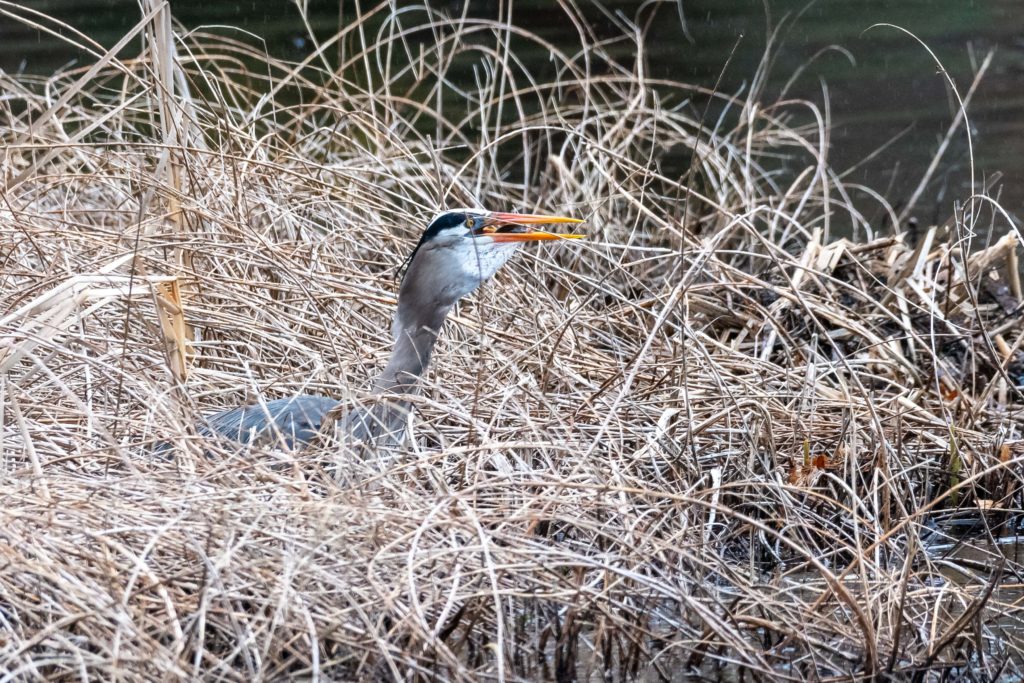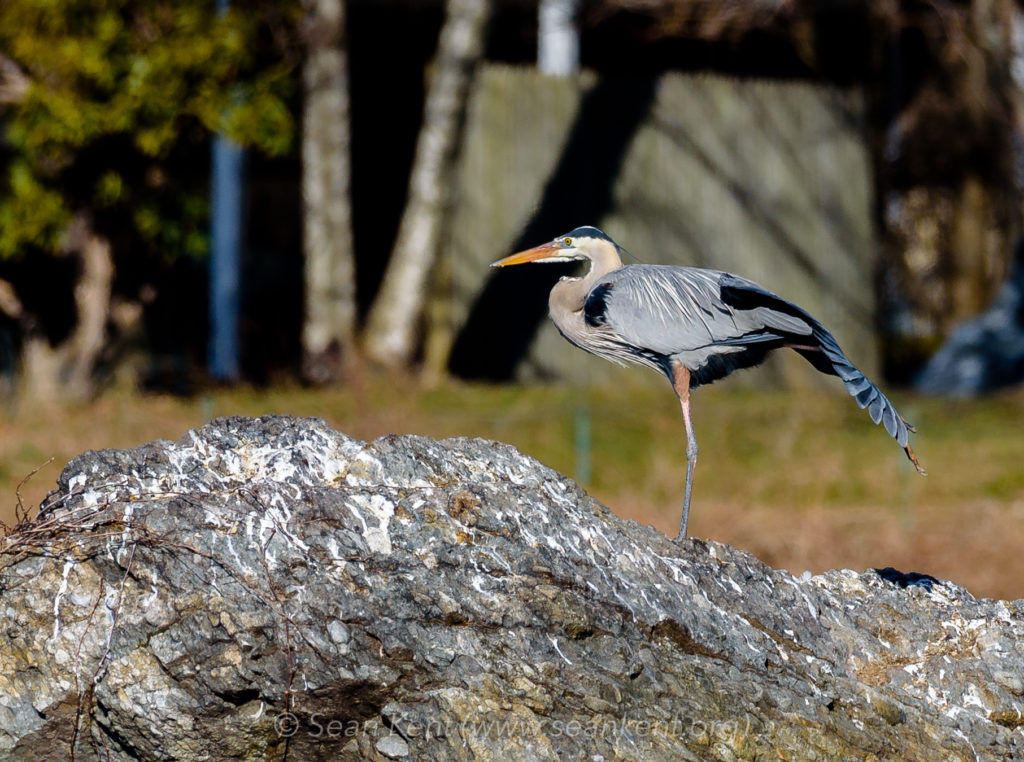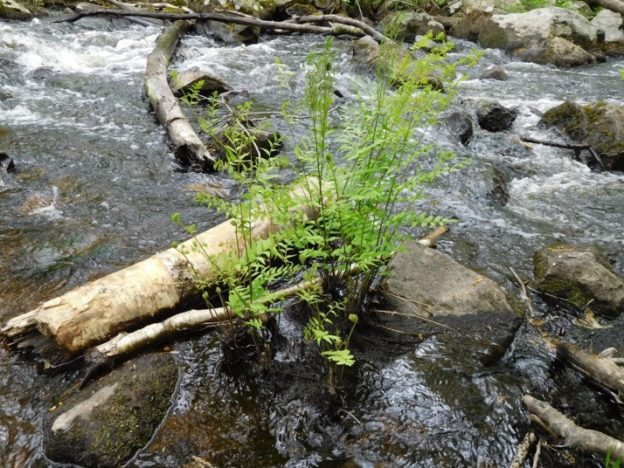Blue vervain (Verbena hastata)
On walks last week I observed two of my favorite flowers, both having blue flowers. Though fairly common in this area, they are less showy and can easily be overlooked among grasses and taller plants that dominate in late summer.
Blue vervain commonly occurs in wet meadows, wet river bottomlands, and stream banks. It typically grows 2-4′ tall. The candelabra-like growth form is distinctive. The tiny flowers are on erect, pencil-like spikes 2-6 inches long. Flowers on each spike bloom bottom to top, a few at a time. Blue verbena flowers are 5-lobed and purplish-blue.
The leaves are lance-shaped and opposite on the stem. Blue vervain blooms from July – September. This handsome clump is growing along the Neponset River in East Milton. Bumblebees are among the important pollinators of Blue vervain.

Blue vervain. Neponset River bank, Milton (August 16)

Blue vervain. Neponset River bank, Milton (August 16)
Blue curls (Trichostema dichotomum)
The charming Blue curls has delicate blue flowers with a distinctive structure. The flowers are ½ to ¾ inch long, having five petals. The lower petal is tongue-like with prominent dark spots on white shading. The four upper petals are shorter and all blue. It’s the stamens and pistil, rising above the petals and curling toward the lower petal that give Blue curls their common name. To get a good photo, I held a piece of cardboard as a background for the flowers.

The flowers are at the tips of opposite stems with a pair of leaves at the intersection with the main stem. Blue curls grow to 18-24 inches. Four to six pairs of flowers may extend from the main stem. It grows along wooded borders, in dry grasslands and sunny dry meadows.


Our guest blogger, Julianne Mehegan, is a wonderful friend of MABA, a birder and a naturalist.


